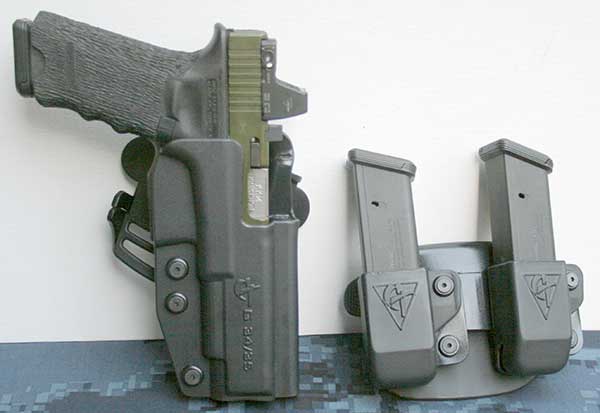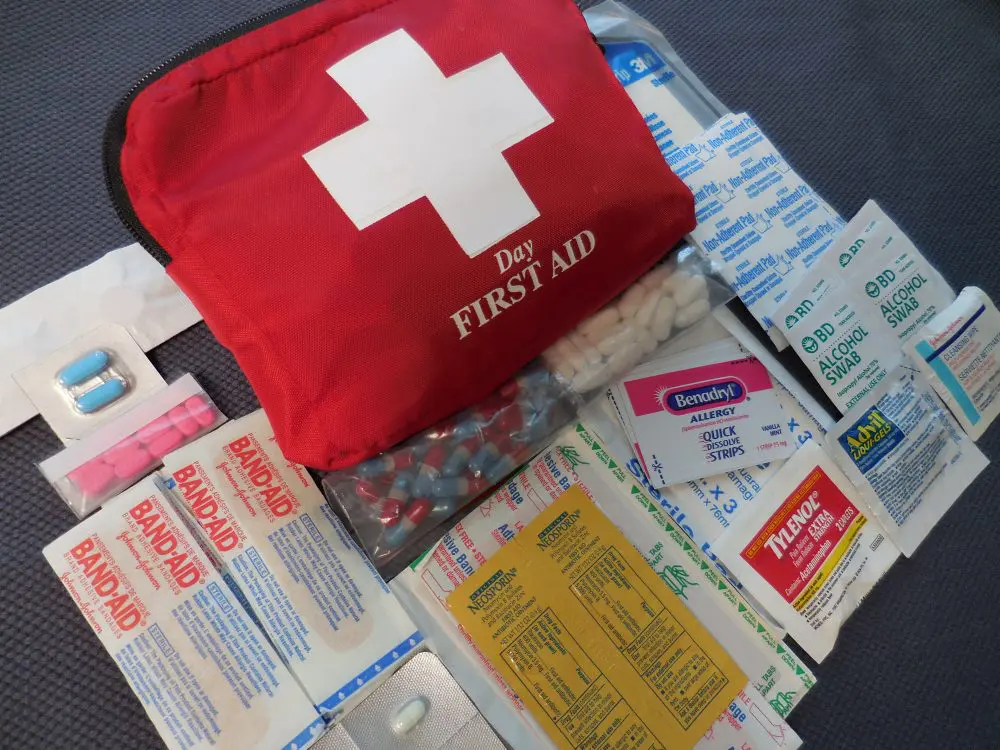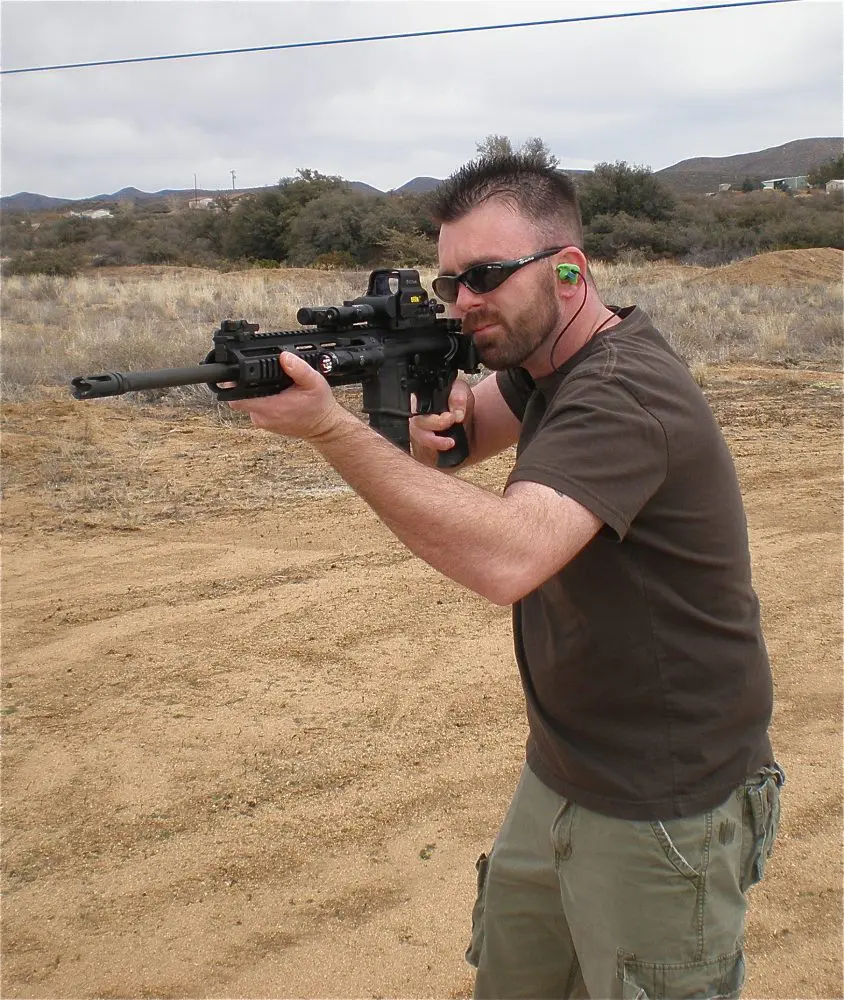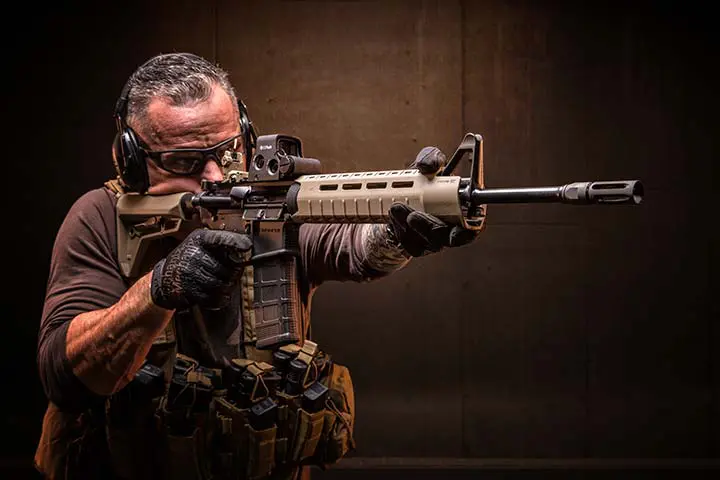Reloading is good, but I don’t want to have to do it in the middle of a fight. — Robbie Barrkman
Like many sagacious comments, the wisdom is buried in humorous words, but is also deep-rooted in battle experience. And unlike the many mindless “I thought of something cute, now buy my printed t-shirt” slogans, you can actually learn something from experienced people.
You have two choices: learn from sages’ experience or be taken for a sucker. If you’re willing to admit you’re not Heaven’s Gift to Gunfighting, study the words of the wise. If you just want to look cool, buy the t-shirt.
Think about it. If you allow a car dealer to put his sticker and license plate frame on your new vehicle, you’ve just paid somebody to be a moving advertising billboard for his business—not to be a safer and more proficient driver.
Knowledge doesn’t drop into your lap. The attainment thereof comes not only from studying the successes and failures of others. It also requires questioning of the status quo, and tracing the origin of a concept before you receive the diluted hand-me-down version.
Any valid and successful so-called “modern” sayings like,“You won’t perform like you expect. You will default to your level of training” aren’t modern by any stretch of the imagination. This is a misquote of:
We do not rise to the level of our expectations. We fall to the level of our training. — Archilochus, ca. 650 BC
These sayings are time and battle tested, and that’s why they are valid—even if misquoted.
So it’s full circle back to Mister Barrkman’s reloading comment. Yes, you need to have the mechanical ability to reload a firearm in the middle of a gunfight, but the obvious point of contention is the circumstantial difference between a training session or competition reload and that required in a ballistic swap meet.
There’s a reason you’re reloading in a fight: Your life hasn’t exactly been a bed of roses in the moments leading up to the restocking of the weapon’s food supply. The reload has been necessitated by the fact that you’ve been trading projectiles with the enemy—or attempting to do so. It may be required because you’ve run low on capacity, or you may have decided merely to top off your supply in the event of potential further hostilities, or you may have failed to check the ammunition status prior to the confrontation and started off with a low fuel supply.
One way or the other, you are now blessed with having to reload a firearm by means of either (1) a “tactical” reload—whereby one retains whatever remaining live ammo is/was in the weapon after shooting or checking ammunition status—or (2) the so-called “speed” load. The latter, irrespective of mechanical weapon status, means you need more fodder in the weapon right now, whereas the tactical reload is supposedly performed when the mythical Lull puts in his royal appearance in the middle of a confrontation.
Let’s get something straight: Lulls became extinct along with “normal” vehicle traffic stops. All traffic stops are high risk, and a gunfight is a gunfight. Get the damn weapon reloaded as the priority. You can always salvage the previously utilized half-empty magazine or remaining cartridges as a secondary objective.
Obviously there are occasions when you have more breathing room to select a tactical load instead of a speed load, but the last living lull occurred on a Christmas Day during World War I.
Barrkman’s main gist is that in a gunfight, unless you’re using a single-shot firearm, you don’t know in advance when you’re going to be reloading, which often aids and abets fumbling and self-induced mental pressure. If the confrontation is of the down-and-dirty dogfight variety, you will lose track of rounds fired. For a variety of reasons, such as time-space distortion and Doctor Bill Lewinski’s “Stop Reaction” principle, the ability to count fired rounds goes out the proverbial window.
This often results in fumble-fingered attempts to feed the weapon under duress. And in a fight, a gun without ammo is as useful as mammaries on a bowling ball.
What is the solution to the quandary? The bad news is that, like everything else in deadly force fighting, there are no guarantees.
The good news is that with assiduous training, you can reduce the odds against you of fumbling the reloading process. Reloading has a lot more potential for failure than the initial loading process because, as stated above, the reload is required when you have already fired or attempted to fire the weapon.
Ergo, your mental stress level is high. So Rule Number One is to have mental control. If you can’t control your emotions, you will invariably lose the fight.
Rule Number Two is obvious: Practice, practice, practice, until you have the mechanical process of the reload down to a fine art. “Thanks for insulting my intelligence,” you say. “I already figured that out for myself.”
Maybe, maybe not.
Have you tried it in an unknown-in-advance shooting scenario, with stationary and erratically moving three-dimensional shoot/no-shoot targets—and with your magazines short-loaded by an accomplice? If not, then no, you hadn’t already figured it out for yourself.
When you don’t know what’s coming up in your training drill except that you’re about to enter a potential “pseudo war,” then you’re halfway there—the rest, for real, is up to Lady Luck.
And that, dear reader, is why you analyze your “realistic” training and make sure that it is, indeed, approximating what occurs in the Barrkman Butcher Shop.
Listen to the sages. Lose the t-shirt.
Louis Awerbuck is director of the internationally acclaimed Yavapai Firearms Academy. Course information and schedules are available at their website at www.yfainc.com.






